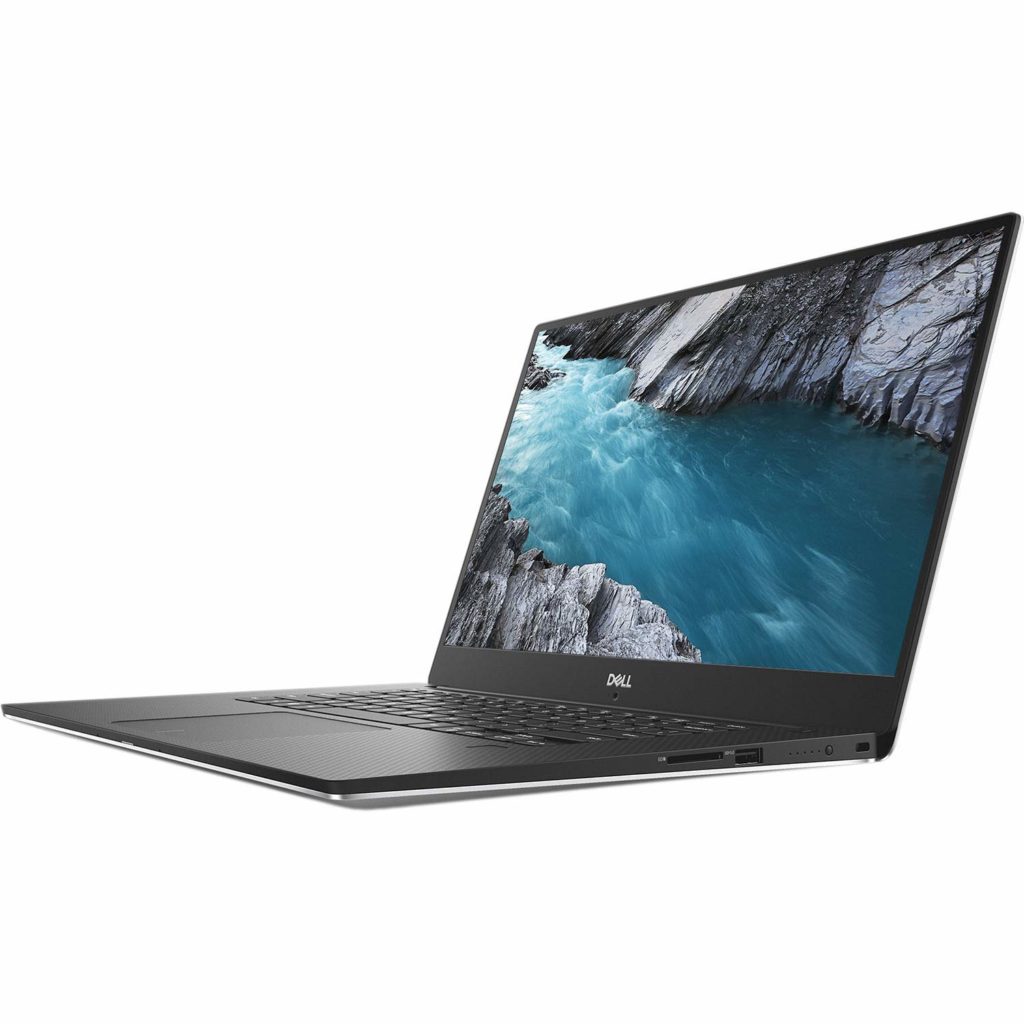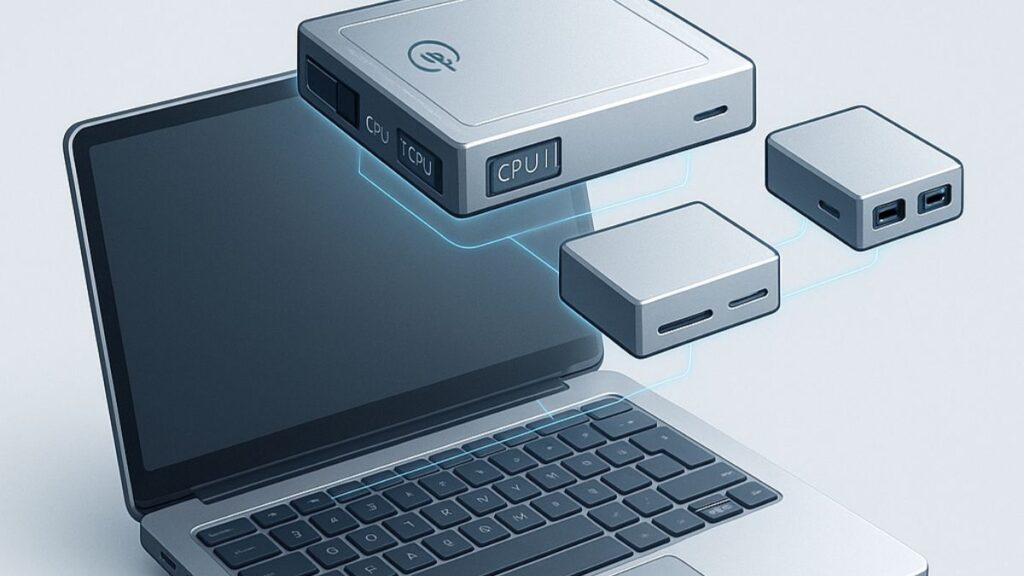It’s easy to forget how limited mobile (or portable) PCs once were. The Osbourne 1 was a hefty (25+ pounds) beast packed into a briefcase-sized enclosure making its portability nominal, at best. What changed things, of course, was the evolution and miniaturization of PC components, including CPUs, storage, memory, battery and displays. As a result, PC vendors have been able to pack more compute power, greater energy efficiency and better image quality into ever slimmer and lighter mobile PCs.
Like most such advances, these developments first appear in high margin business-focused products, including mobile workstations and ruggedized notebooks and tablets designed for industrial applications. But eventually they find their way into “performance”-focused consumer solutions, like the new generation XPS 15 (7590) that Dell introduced at Computex in May. Now that it’s available for purchase, it’s worth considering the impact Dell’s new XPS 15 is likely to have on both consumers and commercial users.
Dell’s XPS 15 7590 by the numbers
I recently received an XPS 15 evaluation unit from Dell and it’s been an eye-opening experience. But before I dig into those details, here’s a rundown of the core features and options available to XPS 15 buyers:
- 9th gen Intel Core i5, i7 or i9 processors
- Intel UHD 630 and NVIDIA GeForce GTX 1650 GPU graphics
- 8GB to 64GB DDR4 at 2666MHz memory
- 256GB to 2TB SSD storage
- 15.6-inch InfinityEdge display available in, OLED 4K Ultra HD (3840 x 2160) non-touch, UltraSharp 4K Ultra HD (3840×2160) touch and FHD (1920 x 1080) non-touch versions
- Killer AX1650 Wi-Fi 6
- 56WHr battery or 97WHr battery (built-in)
- Ports: 1 Thunderbolt 3 with power delivery & DisplayPort, 2 USB 3.1, 1 HDMI 2.0, 1 SD card reader (SD, SDHC, SDXC) and 1 3.5mm Headphone/Microphone combination jack
Not surprisingly, the OLED 4K Ultra HD display (the first ever in an XPS notebook), NVIDIA GTX 1650 GPU, 9th gen Intel Core CPUs, Killer Wi-Fi 6, high capacity memory and storage and the optional 97WHr battery are the features of greatest interest to reviewers and customers. That’s because they help the new XPS 15 stand out from competitors’ products, as well as from Dell’s other notebooks and product lines.
In short, Dell is using its new XPS 15 to show where it stands in terms of advanced product design in relation to its notebook competitors and in delivering the goods to discerning customers.
Using Dell’s “performance” XPS 15
What exactly does Dell mean by “performance” notebook? In its mid- and high-end configurations, the new XPS 15 offers what are essentially workstation-class features in a consumer-oriented package. That’s due in large part to the combination of 9th gen Intel Core i7 and i9 CPUs and NVIDIA GeForce GTX 1650 GPUs that inhabit all but the lowest configured XPS 15.
In the evaluation system Dell provided (Core i9 with 32GB of RAM, 1TB SSD and non-touch OLED display, priced at $2,479.99 on dell.com), the performance is seamless and fast out of the box, even in graphics-intensive photo and video applications. That’s hardly surprising but add-in the OLED display and what begins as a workhorse graphics system transforms into a thoroughbred solution that makes Photoshop a pure pleasure to work with.
How well does the system do in terms of color reproduction? The OLED display supports 100% Adobe RGB color gamut and also utilizes self-lighting pixels were hefty beasts packed into suitcase-sized enclosures that can switch off completely, thus achieving “perfect black.” That pushes the display’s contrast ratio to a remarkable 100,000:1, delivering exceptional detail, especially in dark areas. Dell also includes PremierColor, Dolby Vision and CinemaColor utilities for adjusting color gamut, temperature and brightness in images and video.
In other words, the XPS 15 is a pleasure to use for both creative and entertainment purposes. Plus, the system includes other handy features, including Dell’s new top/center camera (instead of the XPS line’s once-infamous “nose cam”), optional fingerprint reader in the power button (which supports Windows Hello) and premium materials (machined aluminum case/carbon fiber deck) and finishes.
Does Dell’s new XPS 15 have any shortcomings? With weight starting at 4 pounds (or 4.5 pounds with the 97 WHr battery) the system will be a hard sell for regular travelers. Additionally, given the focus on quality graphics components and features, it’s no surprise that battery life takes a hit but that’s a common issue in graphics-intensive notebooks.
However, it’s also worth noting that battery life varies widely from configuration to configuration. For example, Dell’s tests show a system with a Core i7 chip, 8GB of RAM and an FHD display running MobileMark 2014 for nearly twice as long as a system with a 97 WHr battery, Core i7 chip, 16GB of RAM and an OLED display (note: both systems use the optional 97Whr battery). Bottom line; users for whom portability or battery life are critical concerns need to shop carefully.
Final analysis
So how does the XPS 15 7590 measure up against the competition? The two systems with specs closest to it are probably HP’s Spectre 360 15 and Apple’s MacBook Pro. While the Spectre 360 15 reportedly offers slightly better color reproduction than the XPS 15, it utilizes older (8th gen) Core processors, fewer memory and storage options and a smaller (84 WHr) battery.
Many reviewers have also dinged the Spectra 360’s trackpad which relies on Synaptics drivers rather than Microsoft’s excellent Windows Precision trackpad drivers. It should be mentioned that HP recently updated its Spectre 360 13 with 9th gen Core processors and an OLED display and is rumored to be adding similar features to the 15-inch model. However, the company hasn’t announced availability or pricing details.
The 15-inch MacBook Pro’s features and options measure-up well against the XPS 15 (including 9th gen Intel Core i7 and i9 CPUs). Apple also offers larger SSDs and other premium options, though those features push the MSRP into $6k+ nosebleed territory. However, the MacBook Pro’s design hasn’t been updated since the 2016 model and that system resembled the 2012 and 2015 iterations, so the platform is looking increasingly dated.
More problematic is Apple’s continuing reliance on its Butterfly-style keyboard switch (though the company claims to have fixed the issues that plagued so many MacBook users) and Thunderbolt 3 ports (rather than Type-A or Type – the XPS 15 and Spectra 360 offer both).
Dedicated Apple fans will find ways to ignore or forgive the MacBook Pro’s shortcomings—don’t they always? But more openminded Apple customers, along with HP clients and other Windows PC users looking for a superior notebook experience would do well to investigate Dell’s new XPS 15 7590. Overall, the company has delivered a superb mix of quality and performance that will appeal to creative professionals, style-conscious executives and entertainment-oriented consumers. With the new XPS 15 7590, Dell has significantly raised the bar for performance notebooks.
- Dell Concept Luna – Inspiring Sustainable Innovations with Circular Design - December 21, 2023
- AI Alliance: IBM, Meta, Dell and 50+ Founding Partners Pursue Open, Transparent and Safe AI Innovation - December 13, 2023
- Dell Technologies: Creative Partnering = GenAI Innovation - November 30, 2023



